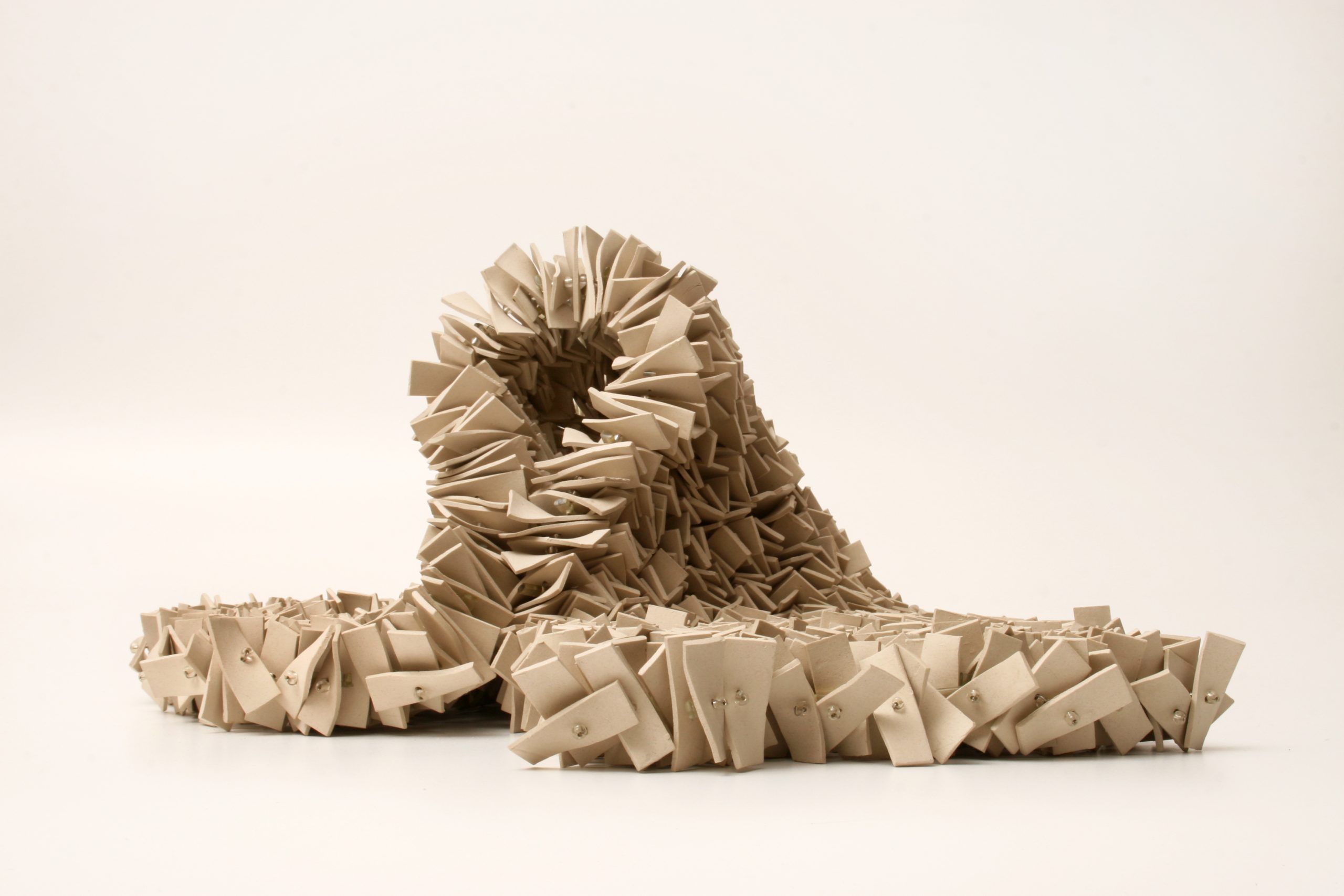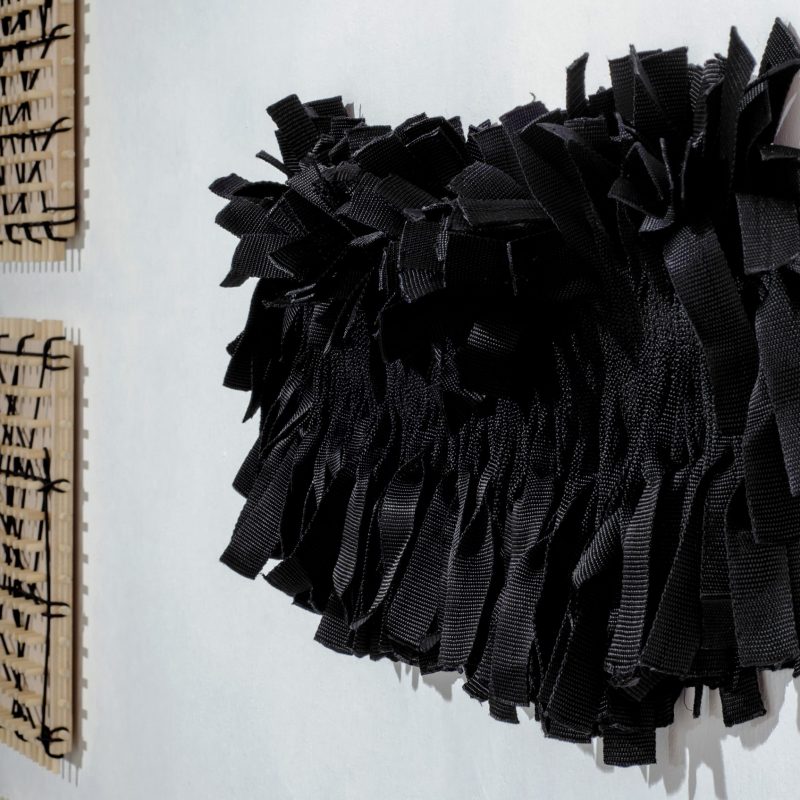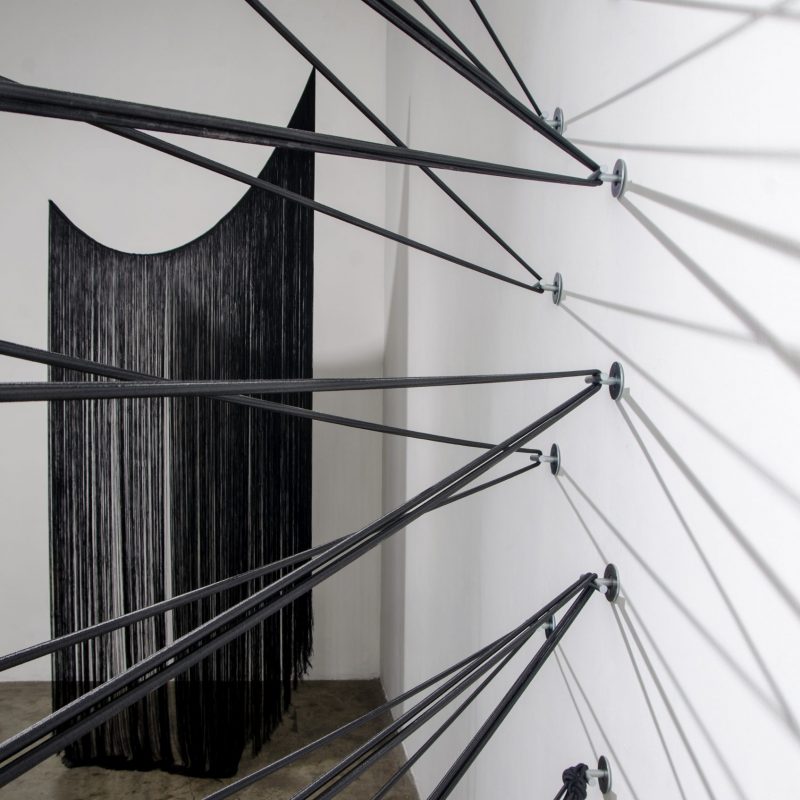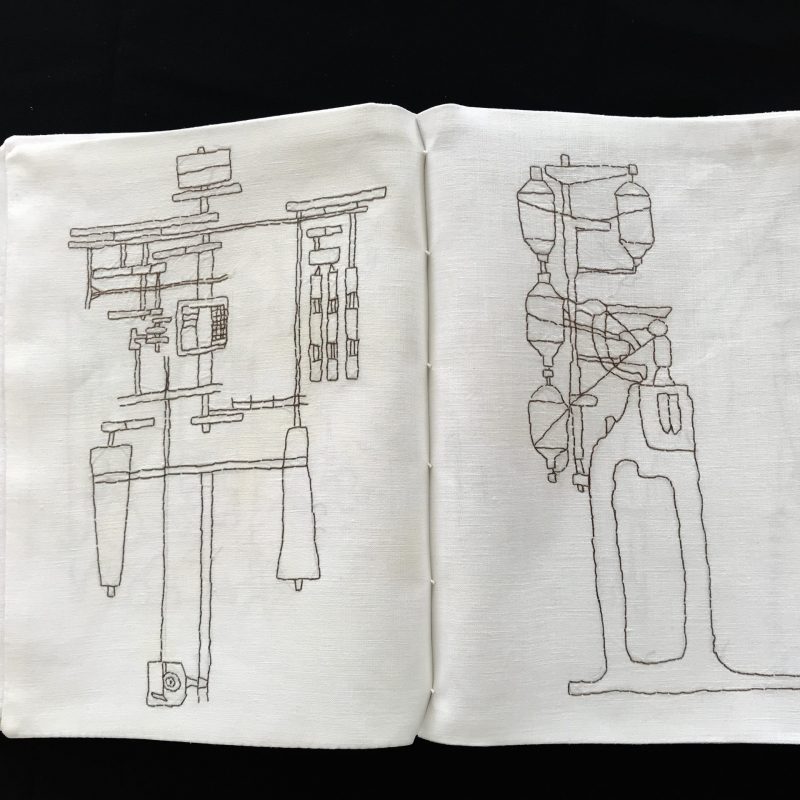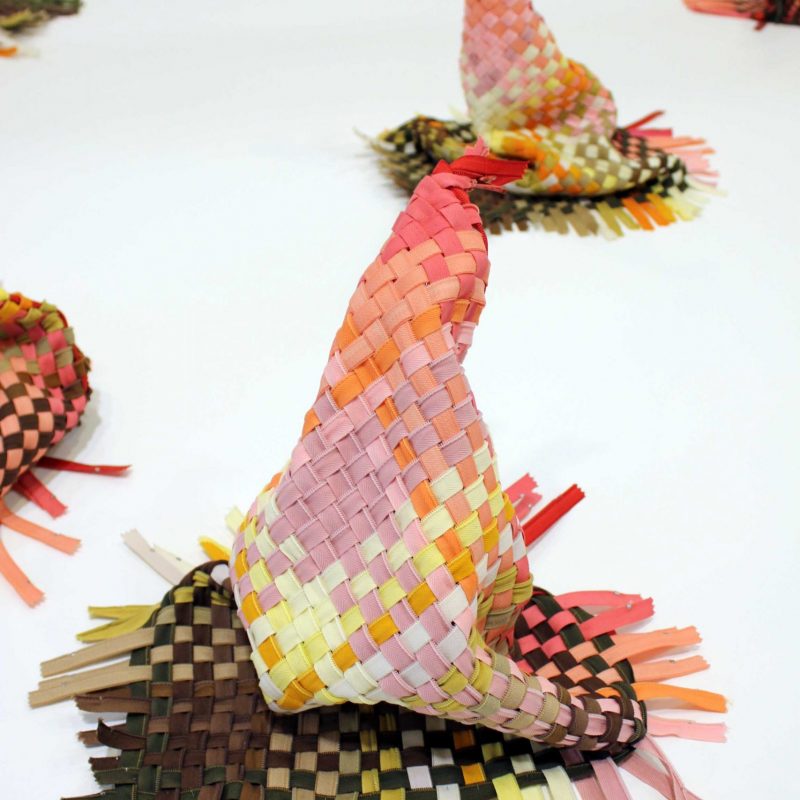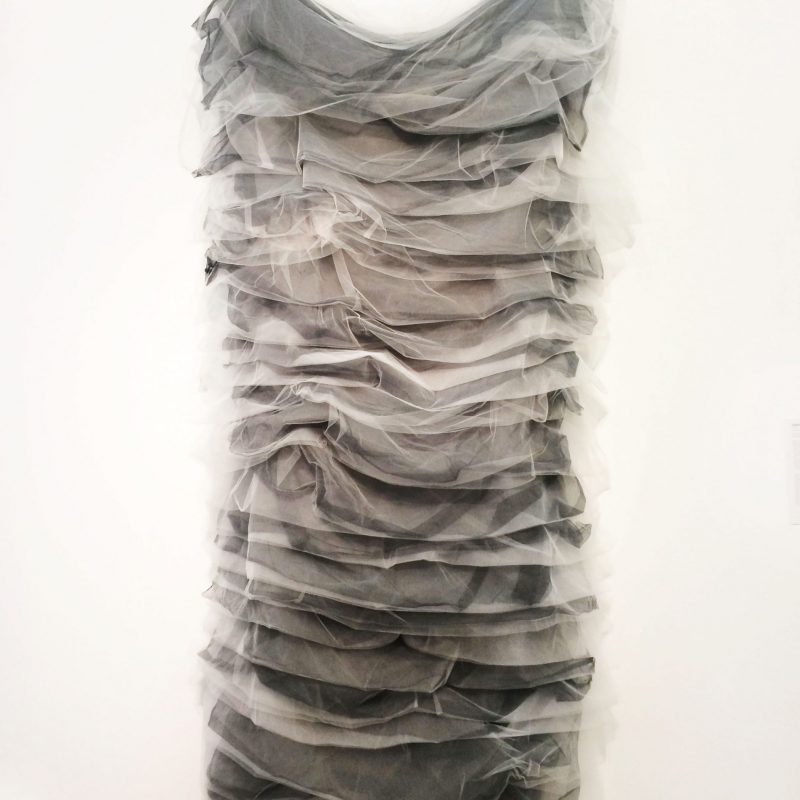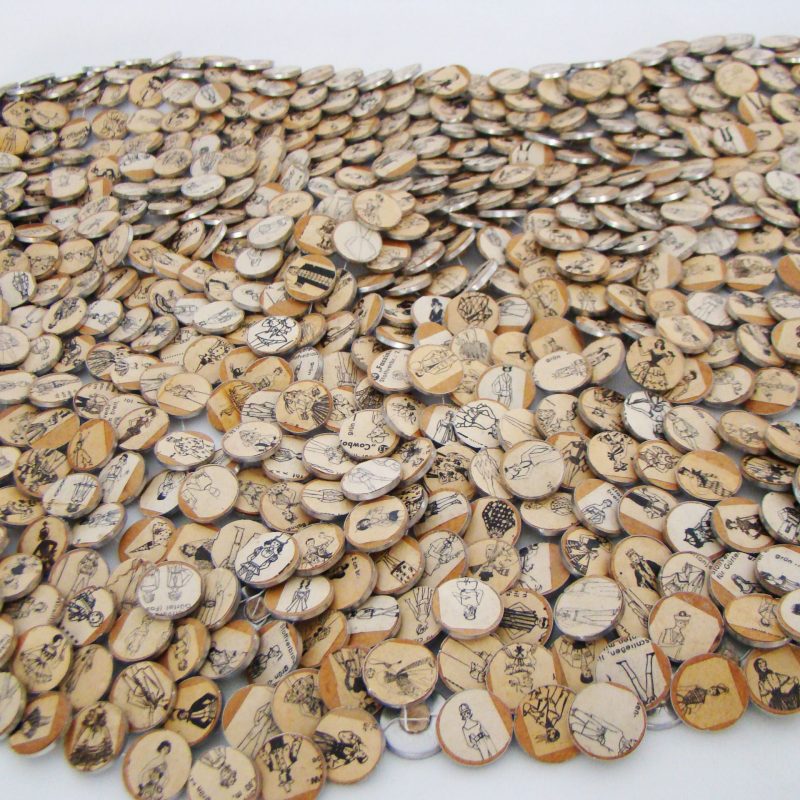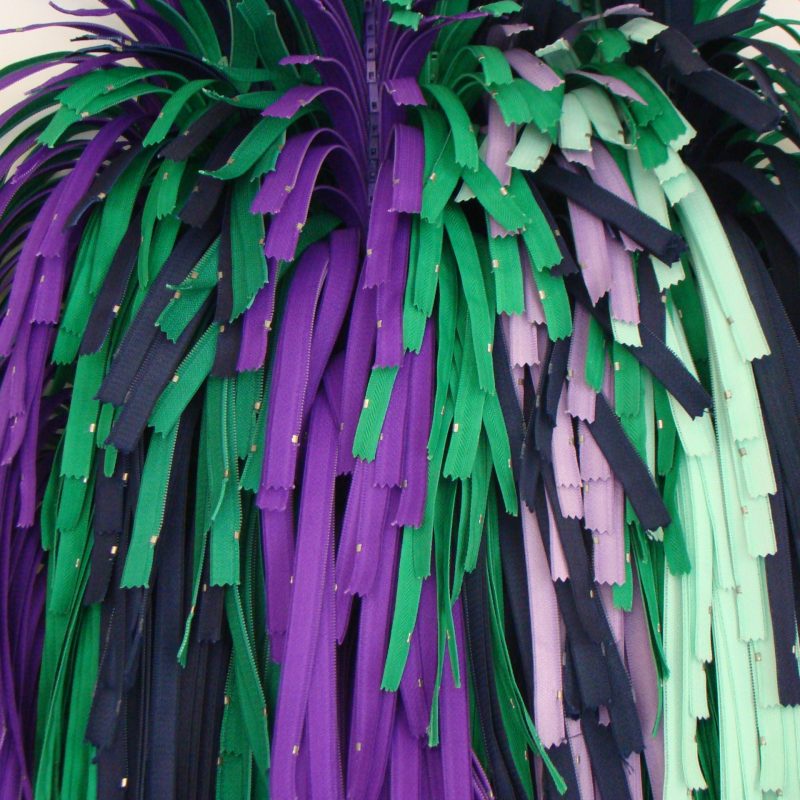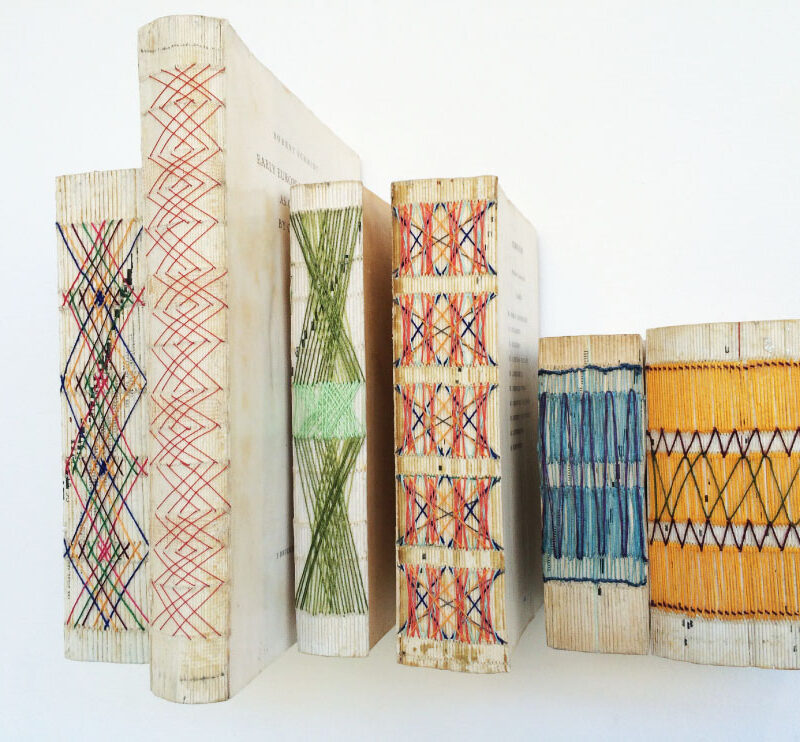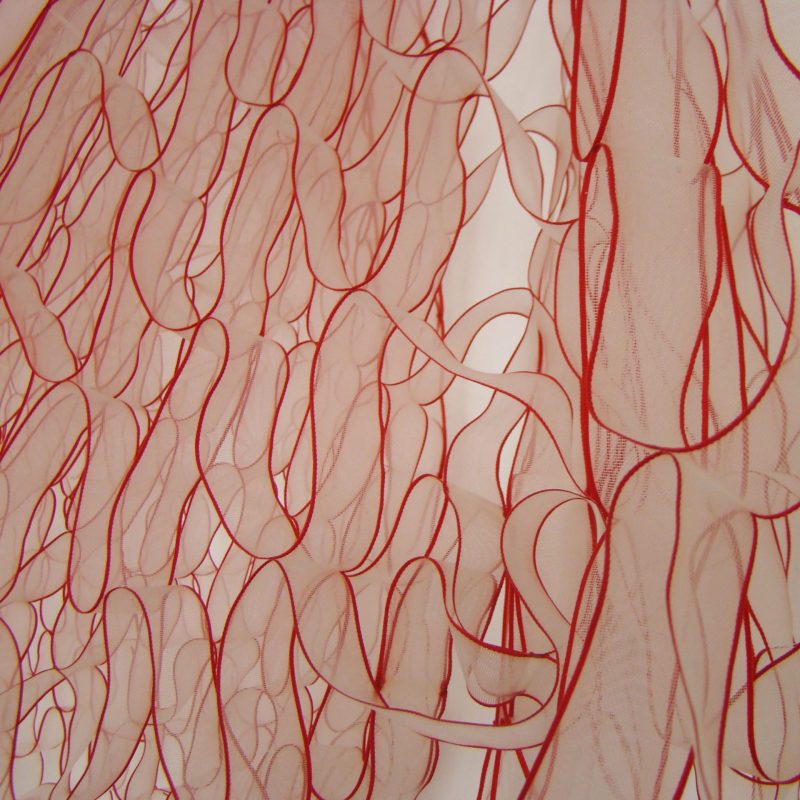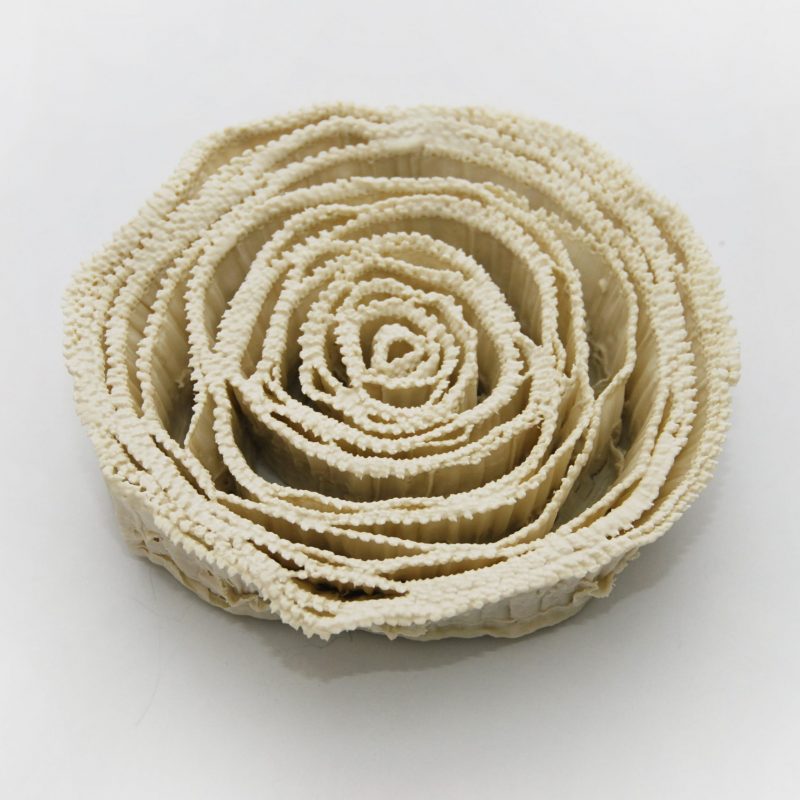INTERVIEW WITH ISABEL CISNEROS
*Featured photo: “Cervantes”, 2007, hand built clay, rubber and braided stainless steel, 3,5 x 57 x 20 cm, ph. cr. Manuel Ricardo Perez, copyright Isabel Cisneros
Isabel Cisneros, a Venezuelan artist originally from Caracas, trained at the Universidad Central de Venezuela, Caracas, specializing in literature and museum studies, and later attended the Instituto de Diseño Fundación Neumann and the Asociacion Venezolana de las Artes del Fuego in Venezuela.
Cisneros first started as a ceramic artist, then began experimenting with textile techniques and materials whose consistency, flexibility and chromatic range seemed to satisfy her need for research and innovation, these characteristics permeate her professional career and, at the same time, allow her not to be conditioned by the limitations imposed by clay’s weight and fragility.
Her sculptures are composed of a multiplicity of industrial objects such as buttons, bolts and cloth or small pieces of clay that are woven together to create a flexible structure, a “fabric-sculpture” that can be manipulated and transformed into an infinite array of forms, thus opposing the rigidity of sculptural material.
Isabel Cisneros’s works have been shown in numerous solo and group exhibitions, receiving important awards including the Premio Secretaría de Cultura del Gobierno del Estado Carabobo, XXXI Salón Nacional de las Artes del Fuego (2004); the XXXVI Premio Nacional de las Artes del Fuego, XXXVI Salón Nacional de las Artes del Fuego (2009); the National Sculpture Prize, X Bienal Nacional de Escultura Francisco Narváez (2009) and the Gran Premio BOD de Artes Visuales, Centro Cultural BOD, Caracas, (2017).
“Acumulaciones”, 2007, ph. cr. Charlie Riera, copyright Isabel Cisneros
A ceramist by training, how and why did you come to experiment with textile materials and techniques?
As artists, we have to dig deep inside our conscious or unconscious memories to be really honest and coherent with our whole body of work. I always consider this fact no matter what decisions I make.
I did a lot of work with but I wanted to fight against the opacity and stiffness of a fired clay piece, even though I was aware that these are the most important qualities of ceramics. That was the time when I started looking for softer quality, airiness, moveableness, and surpass size restrictions imposed by the ceramic kiln. With knitting ceramic modules I’m able to produce any size.
One aspect that encouraged me to deepen my interest in increasing the size of my pieces by adding multiple modules, was the study of the replacement of exoskeleton in insects as an answer to their growth and its very high rate of reproduction.
To match these ideas, I started perforating and beading ceramic modules, thus modeling similar small units. Textile techniques and materials can be naturally adapted to the way I have been assembling my work since 2000.
While I was in the hunting of threads, I was tempted to buy a batch of outmoded buttons, which led me to my gradual separation from clay. I found that I could force, vary, and improve knitting with machine-made pieces, which also shortened the making process. By knotting, sewing, threading and beading similar but not exact pieces I achieve the peaceful, sweet and gentle characteristics of textiles.
Some of the sculptures you have created using clay are malleable and flexible like weaving that can be manipulated by the viewer and transformed. Can you tell us about this series of works and what concept and idea they are inspired by?
It is in my nature to explore with my hands what calls my attention. Texture is a major quality of sculpture and becomes more relevant when I intend to motivate tactile curiosity in people, thus completing the approach texture, weight, and moveables present in my artwork.
Malleability is an important concept for me. We humans have to be more flexible as time passes by which makes us more resilient to the challenges life imposes. This was the main reason why I was not satisfied with producing solid ceramic pieces; I want my pieces to be pieces of fabric that can be freely raised, extended, stretched and wrinkled. Another important fact is that flexible pieces are easy to handle, pack, storage, and transport.
In works such as M&J, Cloud, Fifth Element, to name a few, there are concepts associated with accumulation, repetition, recycling, adaptation, and memory. Can you explain their role within your creative process?
I would refer more to reuse than to recycle. That is, I do not look for materials that were used or discarded. Outworn is not an attribute I’m looking for.
I look for things that are not needed anymore or that are outdated or deactivated. I want to give them another meaning, sense and purpose.
Most of my pieces are made by threading multiple and similar modules, either of modeled clay or discarded objects. I want to reinforce the idea that there is strength in the union of many small pieces and that there is a growth in size if we stay intertwined. This is a very important survival strategy.
All materials have qualities such as hardness, color, shape, size, amounts. These qualities impose limits on the way I approach each artwork and make the making more playful, enjoyable, and surprising.
Talking about your most recent solo exhibition “Traslaciones” you said: “I wanted to display my main interest at the moment: the history, importance, usage, memories, and feelings in all the things we can inherit from all the seamstresses in our family”. What are the history of this project and the concept that inspired this body of work?
I started working with paper. I took away the cover of family books and embroidered honeycomb stitches on their spines. While manipulating these books, I became aware that I had to point out the information printed on them.
My grandmother was a very talented and restless seamstress and crocheter, and I always look back for my memories of her working in my research on textiles techniques. For that specific project, I intentionally looked and bought books whose content was sewing manuals, so that I could “study” and fill my mind with sewing-related images while I work.
I moved on to sewing patterns because they are a fascinating geometry of the human body. You need to have a very special and spatial cleverness to conceive and develop wearable designs. With this, I reinforce the idea of adaptation and adjustments various body sizes and shapes require.
Therefore, I always keep in mind and honor those who used such materials. Most of them came from kept family memories of people I know. The most important legacy is that these manuals and patterns were filled with color marks, numbers, handwritten notes and tears as evidence that they were used and adjusted.
I worked, both practically and conceptually, solving ways to approach a very fragile material as used paper, which has proven to be very resistant and has been in the making for more than 70 years. The transparency and lightness of tissue paper define a meticulous practice: embroidering with silk thread made at the same time patterns were printed (around 1950).
Furthermore, information about where, when, and why these sewing patterns were made, marked another type of perspective in which I wanted to acknowledge the efforts to develop skills in anyone. Find out a shape in a cluster of several sewing patterns overlapped and printed on a single page with different types of lines is not an easy exercise.
I stand out the autonomy that the power of knowledge implied for the new dressmaker: the choice of models, type of fabric, printing, colors, buttons, etc. This emancipation influenced the awakening of equality notions, whether of gender or social class.
“M4 Quietud (Quietude)”, 2019, tissue paper, 165 x 265 cm, from: Traslaciones Luis da Silva, copyright Isabel Cisneros
Can you tell us about the process of research and experimentation on materials that is the foundation of your entire professional career? How do the intrinsic characteristics of the materials you use influence the final work?
I’m very restless. I need to have pending projects to keep my mind thinking and looking for procedures and solutions, but my hands are much more impatient than my mind. What moves me the most is inquisitiveness. I do not mind disassembling and reassembling.
Working with laborious and industrious textiles techniques is a pleasure for me. My way of working has always been one of trial and error. I have to admit that many times it’s not easy to find out the threading pattern. I look for a scaly finish to the pieces, because overlapping the scales provide strength and verticality.
A work to which you are particularly attached or that has played an important role in your artistic growth process?
I was impressed the first time I saw a Tunga’s piece from the Magnetos series. It was an iron wall covered with magnets shards, and a magnet wall covered with iron shards. Shards pieces moved if you put your hand close to it. Other artists that I examine are Robert Morris, Olga de Amaral, El Anatsui. Here, in Venezuela, we had a very important geometric abstraction movement. Gego is the one that marks me the most.
What is your main source of inspiration today? What are you working on at the moment?
I spend hours looking for fashion designers in internet. I’m impressed by the way they reinvent very commonly used models such as pants, blouses, shoes, t-shirts. I also visit Design Museums, Textile Organizations, Magazines pages. Recently I discover Rien Bekkers, a Dutch theater and opera costumer designer.
Quarantine allowed me to draw because I had plenty of time. Then, I embroidered what I drew and made books with those embroidery. First, I started with abstract exercises, then forced myself to figurative drawing, something I had never felt comfortable with. Beginning with old textile machines from the industrial revolution, I pushed myself far away to draw human bodies, more specifically, men embroidering. It was amazing to find so many talented artists and manbroidery sites, and to define my way of facing craftivism and gender issues.
Now I’m trying to go beyond mi prejudices against the sewing machine impersonal finish and to incorporate this procedure in my work.
